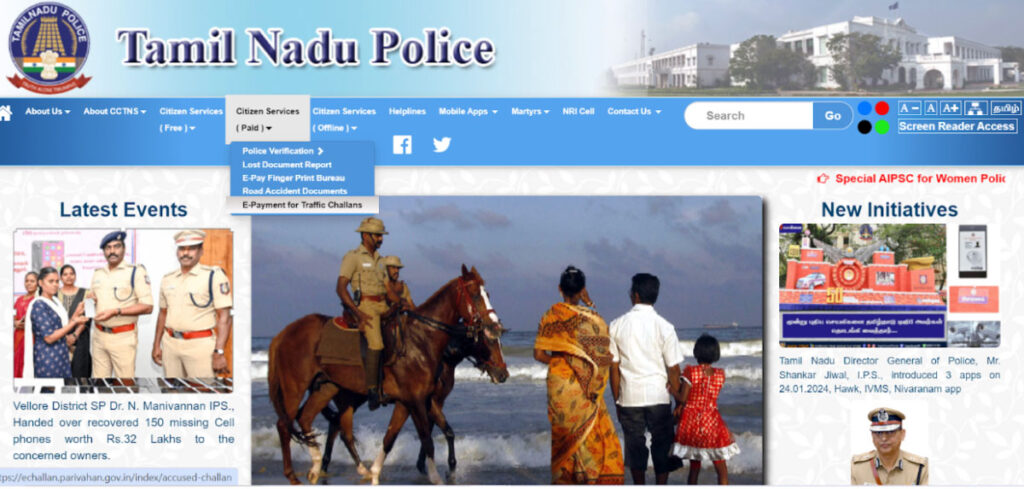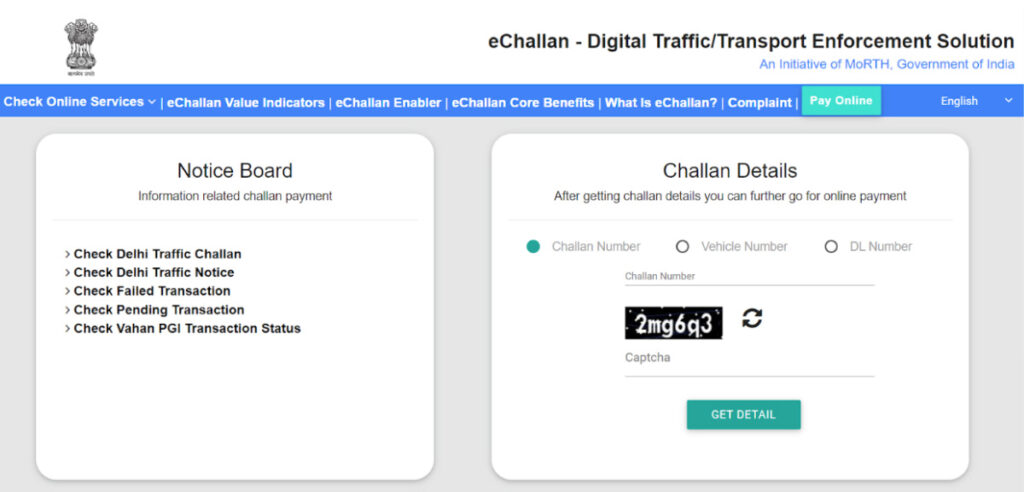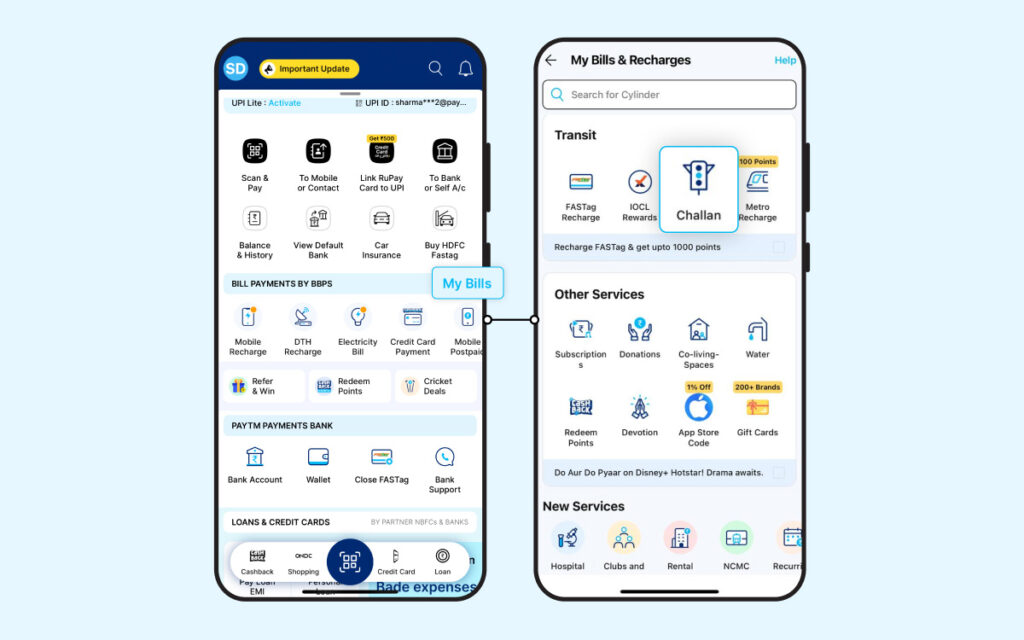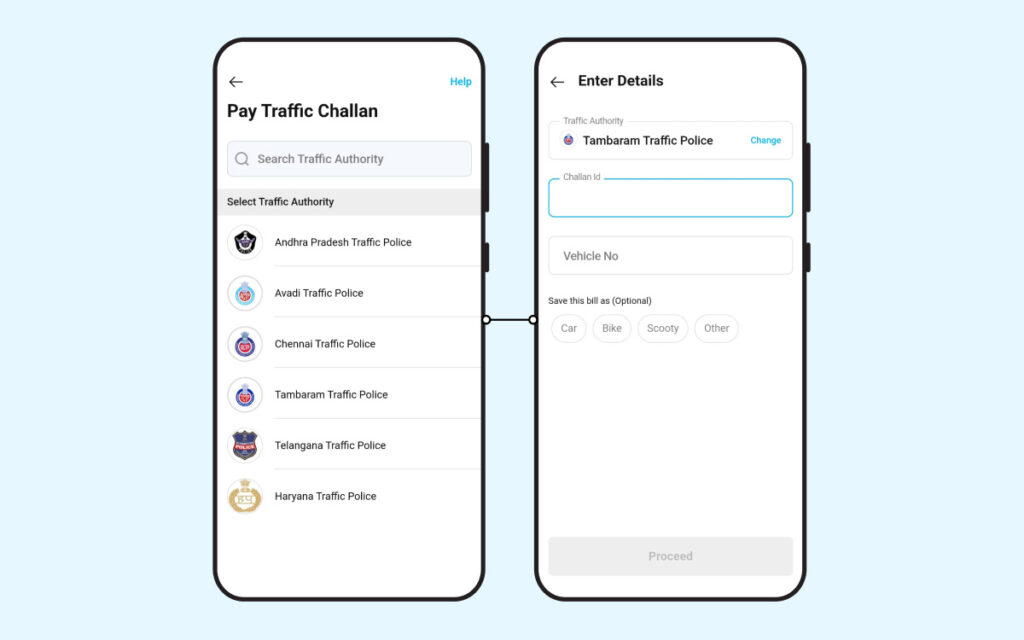As a responsible driver, it’s important to pay your traffic fines on time. Luckily, platforms like Paytm have simplified the payment process. Just log in to the Paytm app and make your payment to avoid any additional penalties or consequences. In this blog, we will guide you through the step-by-step process of paying your traffic fine.
What is E-Challan?
An e-Challan is a digital version of the traditional paper traffic ticket issued by traffic authorities for violating traffic rules. It is generated and issued electronically, usually through automated systems such as CCTV cameras, speed guns, or manual entry by traffic police officers.
How to Check and Pay Tamil Nadu E-Challan Online?
Step 1: Visit the official website of the Tamil Nadu police government to make the payment

Step 2: Provide either the vehicle registration number, challan number, or driving license number. Check out the given link:https://echallan.parivahan.gov.in/index/accused-challan

Step 3: Enter the captcha code and click on ‘Get Details’
Step 4: Review the offence details and pending charges.
Step 5: Click on the ‘Pay’ button
Step 6: You will be redirected to the net-banking page.
Step 7: Choose your preferred payment method, including debit card, credit card, net banking, etc., to complete the transaction.
*Note the reference number generated before proceeding to e-challan online payment for further reference.
How to Pay Tamil Nadu E-Challan Offline?
If you want to pay an e-challan offline in Chennai, you have three options:
- Find a Chennai Traffic Police officer with an e-challan device. Give them your vehicle registration, driving license (DL), or challan number. Pay the fine in cash and get a receipt.
- Go directly to the Chennai Police Headquarters and pay the penalty in cash.
- You can also send the e-challan amount to the Chennai Traffic Police Department’s postal address using a demand draft, pay order, or cheque.
How to Pay Tamil Nadu e-Challan Through Paytm?
On Paytm Mobile App
Step 1: Open the Paytm app on your device.
Step 2: Go to the ‘Bill Payments’ section and tap on ‘View More’. Scroll down to find ‘Transit’ and select ‘Challan’. Alternatively, you can directly search for ‘Challan’.

Step 3: Choose the ‘Traffic Authority’.
Step 4: Provide the necessary details like Challan ID/Number, vehicle number, etc.
Step 5: Tap on ‘Proceed’ to view the fine amount.

Step 6: Select your preferred payment method from options like credit card, debit card, UPI, and net banking.
Step 7: After completing the payment, you’ll receive a notification confirming the transaction.
On Paytm Website
Step 1: Log in to the Paytm website.
Step 2: Go to the ‘Recharge & Pay Bills’, click on ‘All Payment Services’ and select ‘Challan’.
Step 3: Choose the ‘Traffic Authority’.
Step 4: Provide necessary details like Challan ID/Number, vehicle number, etc.
Step 5: Click on ‘Proceed’ to view the fine amount.
Step 6: Choose your preferred payment method from options like credit card, debit card, Paytm wallet, UPI, and net banking.
Step 7: Upon completing the payment, you will receive a notification confirming the transaction.
Note: Currently, individuals can pay challan for Andhra Pradesh, Avadi, Chennai, Tambaram, Telangana and Haryana traffic authorities only at Paytm.
Latest Traffic Rules Violation Penalties in Tamil Nadu 2024
Let’s take a look at the latest traffic rules violations in Tamil Nadu-
| Traffic Violation | First Violation Penalty | Repeat Violation Penalty |
|---|---|---|
| Driving/riding without a license | Rs. 5,000 | Rs. 5,000 |
| Entering ‘No entry’ zones | Rs. 2,000 to Rs. 5,000 | Rs. 2,000 to Rs. 5,000 |
| License-associated violations | Rs. 25,000 to Rs. 1 lakhs | Rs. 25,000 to Rs. 1 lakhs |
| Rash/negligent driving | Rs. 5,000 | Rs. 5,000 |
| Not following traffic authority orders | Rs. 2,000 | Rs. 2,000 |
| Unpaid road tax | Rs. 300 | Rs. 600 |
| Causing noise pollution | Rs. 100 | Rs. 100 |
| Offence by juveniles | Rs. 25,000 and up to 3 years of prison time | Rs. 25,000 and up to 3 years of prison time |
| Driving a vehicle without RC | Rs. 5,000 | Rs. 5,000 |
| Overspeeding | Rs. 300 | Rs. 300 |
| An oversized vehicle on the road | Rs. 5,000 | Rs. 5,000 |
| Neglecting seatbelt rules | Rs. 1,000 and/or community service | Rs. 1,000 and/or community service |
| Drinking and riding/driving | Rs. 10,000 and/or 6 months in prison | Rs. 15,000 and/or 2 years in prison |
| Not having valid insurance | Rs. 2,000 | Rs. 2,000 |
| Violating pollution emission norms | Rs. 1,000 | Rs. 2,000 |
| Other regular traffic violations | Rs. 500 | Rs. 500 |
In summary, it is important to pay your e-challan on time to avoid any problems. If you don’t pay within 60 days, a traffic police officer will come to collect the payment from your address. If you can’t pay or aren’t available, you may receive a court summons to appear in court and settle the fine. So, always make sure to pay your challan on time to prevent any issues down the line.
Disclaimer: This blog is here to make complex processes easier to understand. However, please be aware that information might become outdated or change over time, or updates may occur. As a result, there might be some differences in the information provided. We do our best to keep everything up-to-date, but we recommend verifying information on official websites for accuracy.



